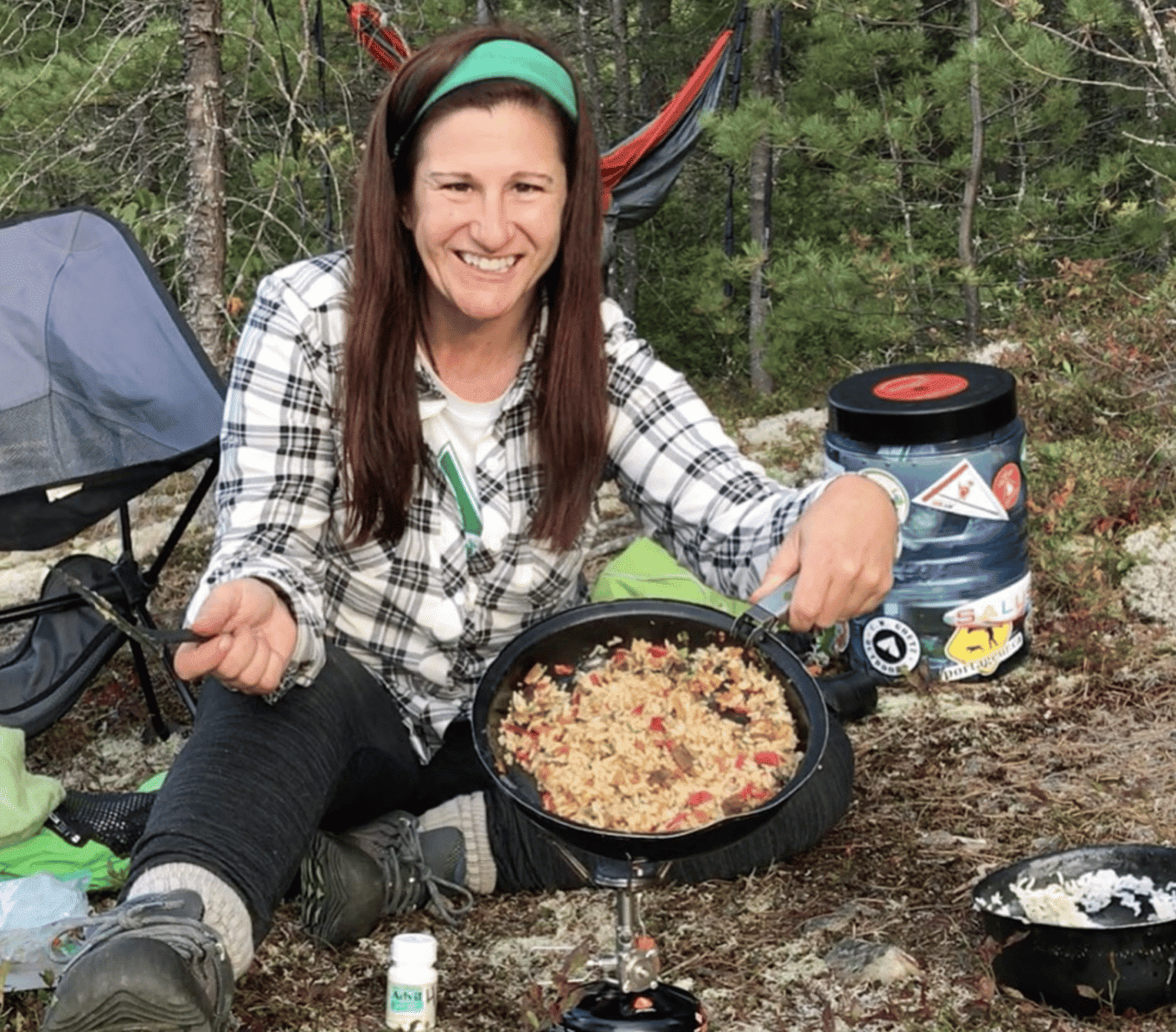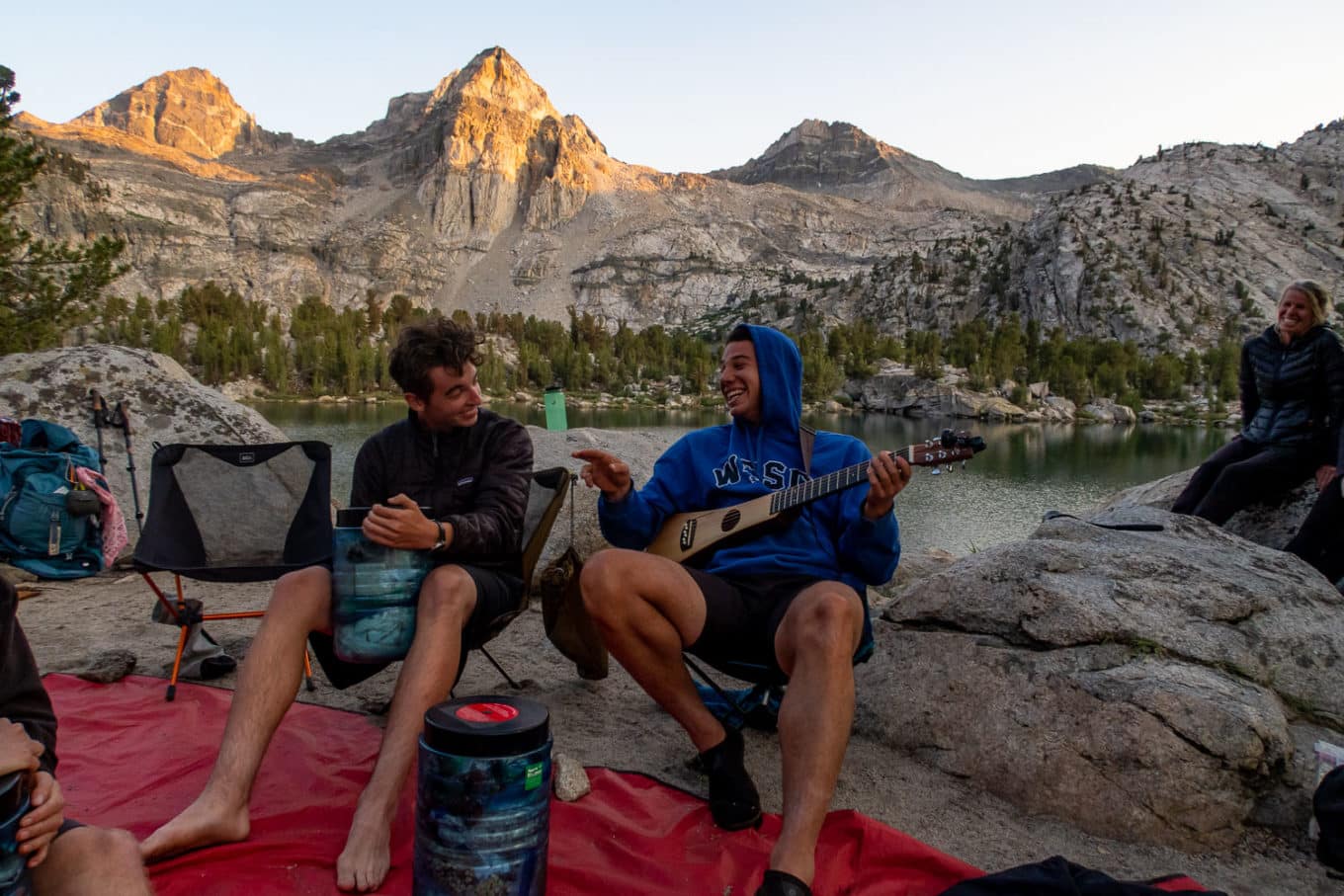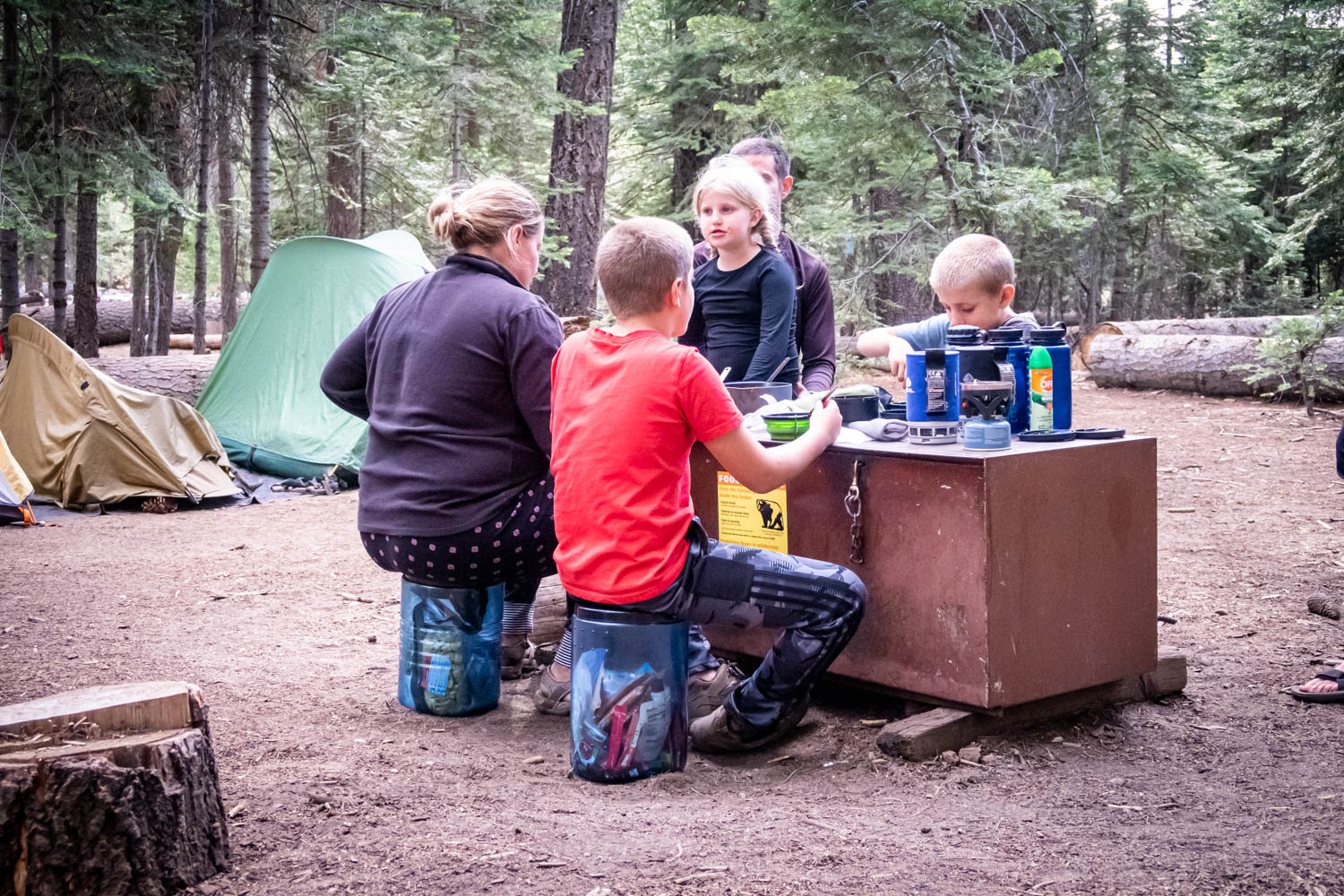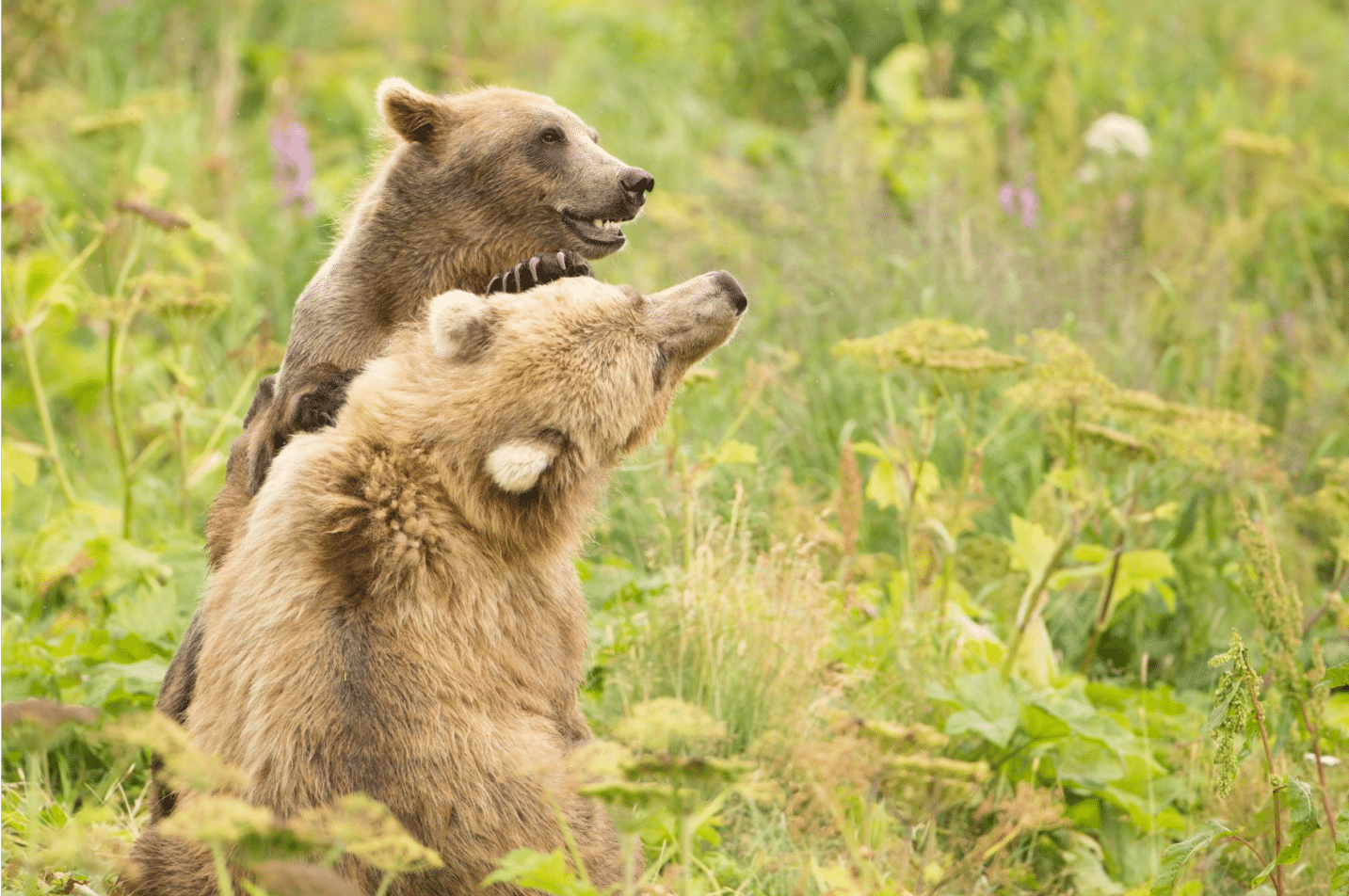Grub Gear: Fill Your 3 Basic Needs with the Right Camping Cooking Equipment
Having the right equipment for cooking during your camping trip can make or break the experience.
Have you ever gotten the fire going, pulled the hotdogs from the cooler, and realized you forgot skewers? I have. Re-organizing my camping cooking equipment before the next trip immediately became a top priority!

This Ain’t Your Momma’s Kitchen
Packing up to live under the stars for a while can be incredibly daunting when you start thinking about food. You use so many different things to make a meal at home! There might be a sauce going in one pan on the stove, meat in the oven, another stovetop pan working on some grain, greens waiting for their dressing in the fridge…
The kitchen appliances and the sheer volume of dishes used while cooking a complete meal can’t be replicated at camp. It’s just too much!
- We need to be able to make things hot.
- We need to be able to keep things cold.
- We need to hold and handle our food.
In this article, you’ll learn your options for each need. Plus, you’ll get a bonus feature of a special “camp only” piece of gear that will keep you safer.
Cooking Equipment to Heat Your Food at Camp
The heat source you choose will depend mainly on your camping set-up and what you hope to prepare.
Here are 3 primary sources and how to use them.
1. Fire
Dedicated campsites will feature a fire ring to keep flames contained. Many campgrounds offer split wood for sale or welcome foraging for downed tree branches. Be sure you always observe any local burn bans and know the restrictions of your campsite! If you are road-tripping to your campsite, purchase local wood to prevent the introduction of invasive species.
When counting on fire as a heat source, you’ll need to pack a way to start it. Matches, lighters, or a flint and steel will do the trick. Be sure to practice that last one before you depend on it!
You’ll need equipment that can stand high heat to cook with fire. Small steel pots will work if you’re backpacking. If you’re driving to your site, you could opt for cast iron and bring a fire grate for larger fires. Dutch ovens are perfect for making stew for multiple people.
2. Propane
Reliability is the main benefit of using propane to heat and cook your food. You can easily maintain consistent heat and aren’t susceptible to local burn bans. It comes in pressurized cans and is available in two standard sizes.
Propane stoves range from pocket-sized screw-ons to stoves with multiple burners. The smaller options are handy for backpacking, but using large pots results in instability.
3. Other Fuel
Some stoves use solid fuel options, like Hexamine, Trioxane, or Sterno. These heat sources are easily packable but produce less energy per gram of packed weight than propane.

Camp Equipment to Keep Perishables Cool
If you’re bringing perishables, how to keep them cool needs to be part of your thought process when packing. There are dozens of cooler options ranging from the size of your pickup tailgate to backpacking cooler bags. So, what do you actually need?
Most cooler manufacturers label their products like “Keeps ice for X days!” but it’s important to note that brands test their products in their own way. Most of the time, the cooler is left closed during the test, which will obviously extend the life of the ice. Also, that claim doesn’t mean no melting occurred during that time! For instance, Igloo’s testing method states that the test ends when the cooler’s interior reaches 40* F.
If you’re going to be somewhere where you can’t replenish the ice, consider using less perishable food and saving some more space for ice packing. On multi-day trips, you should also freeze the foods you plan on eating last. They can help keep the earlier meals cool.
Electric coolers may also be an option for you. They range from low-power, low-capacity car models to the upper end, which are basically micro-freezers. Lower-powered models can plug into your car, but the big dogs will need more juice, like from a plug-in campsite.
Use the length of your trip, the size of your party, and your destination to decide how much space, insulation, and power you’ll need.

Equipment for Handling Your Food at Camp
Unless you like to grab an apple and call it a meal, your food takes several steps between the cooler and your mouth. Each one can utilize several tools.
1. Preparation
This step includes dicing veggies, slicing bread, marinating chicken breasts, pre-seasoning steaks, etc.… You may use cutting boards, plastic bags or containers, knives, and more.
2. Cooking
Getting your food to the appropriate temperature will require fuel for frying, sauteing, boiling, or grilling. The fuel choice and dish may require a grate over the fire, charcoal, skillet, or skewers.
3. Serving
Once your food is ready, you’ll need to be able to handle it. Plates, bowls, and utensils can be whatever suits you best.
All this can take as many tools as you want. I fantasize about gourmet meals cooked under a painted sunset sky. You know the videos … fancy knives, beautiful slabs of wood, babbling brooks, and giant steaks. One day, I’ll be that person.
But I’m pretty basic right now. I like to do as much prep work as possible at home, mostly because I hate the camp clean-up. If I can chop all the veggies and season the meat in my home kitchen, I will. I’ll even completely assemble breakfast burritos, so all we have to do is heat and eat! If you’re my kind of basic, you’ll appreciate my post about lazy camp food.
If you don’t know your style yet, try as many options as possible to find out what your personal preference is. I thought I’d love being a cast iron cook on family camping trips. And I DID. But I didn’t love being a cast iron packer. Now, I only bring the Dutch oven when I know I need it for chili or to try biscuits again. Otherwise, I make do with lightweight, folding handle metal skillets instead.

Bear Country Food Safety
An often overlooked piece of camp cooking equipment is the bear-proof container. Food security is a big responsibility regardless of the type of camping you’re doing. You need a canister if you’re camping in bear country.
That’s a large chunk of the United States. Brown bears roam the mountains of the northwest, and black bears call pockets of central, northeast, and southern regions home. You may be entering bear country without knowing it, and some locations require bear-proof storage for hikers/campers.
Read more about required locations and where bears roam to ensure you’re prepared.
Brands like BearVault have made food security in bear country easy. These canisters fit in backpacks and are wide enough to serve as a camp stool. Their clear sides make it easy to see what you’re grabbing. Using one couldn’t be easier.
- Pack all your food and any attractive scents (deodorant, gum, toothpaste, etc.) inside your vault.
- Place the lids on and screw on tight. You’ll hear TWO clicks, signaling that it’s locked into place.
- Walk 70 paces away from your campsite.
- Find a flat spot to set your Bear Vault. Better yet, set it between boulders so it can’t roll away.

Some established campgrounds will have bear lockers. That’s a big metal box you can put your not-so-bear-proof food containers in to keep them safe. If they’re there, use them. But if you want to be self-sufficient or know that your destination doesn’t have a locker, bring a canister!
Prevent Food Habituation
Following these steps does more than just keep bears out of your tent. They make sure you’re not contributing to a food habituation problem.
When a bear tries to access a camper’s food and succeeds, it’s more likely to try again. If it succeeds multiple times, it’s quick to recognize a pattern. Humans = easy food. That’s not a pattern we want a bear to recognize!
Food habituation can lead to human injuries and bear euthanization. Keeping them out of your food will help prevent both.

Your Camp Kitchen Awaits
Remember to fulfill your 3 basic needs when preparing your camp kitchen. Keep it as simple as you’d like, or splurge on all the fancy gadgets. When you can heat or chill your food at will and handle it as desired, you’ll be well on your way to gourmet.
Author Profile

Jessica Cockroft
Jess merges her passion for words and an insatiable longing for adventure as an outdoor freelance content writer and marketer. When she’s not busy stringing words together you’ll probably find her planning another camping trip for her crew of kids or taking care of the homestead. You can find her on LinkedIn and Instagram, as well as on her own website.



